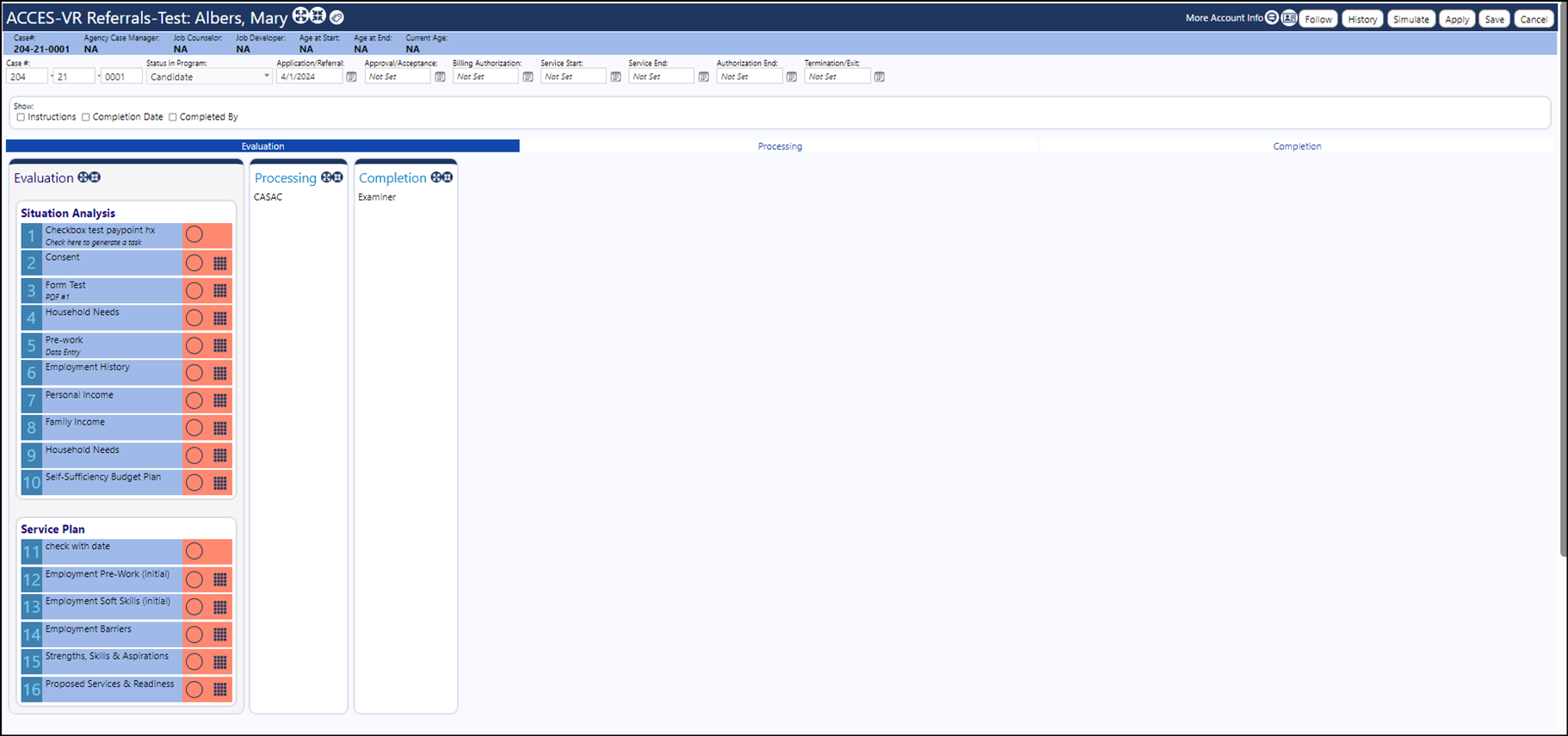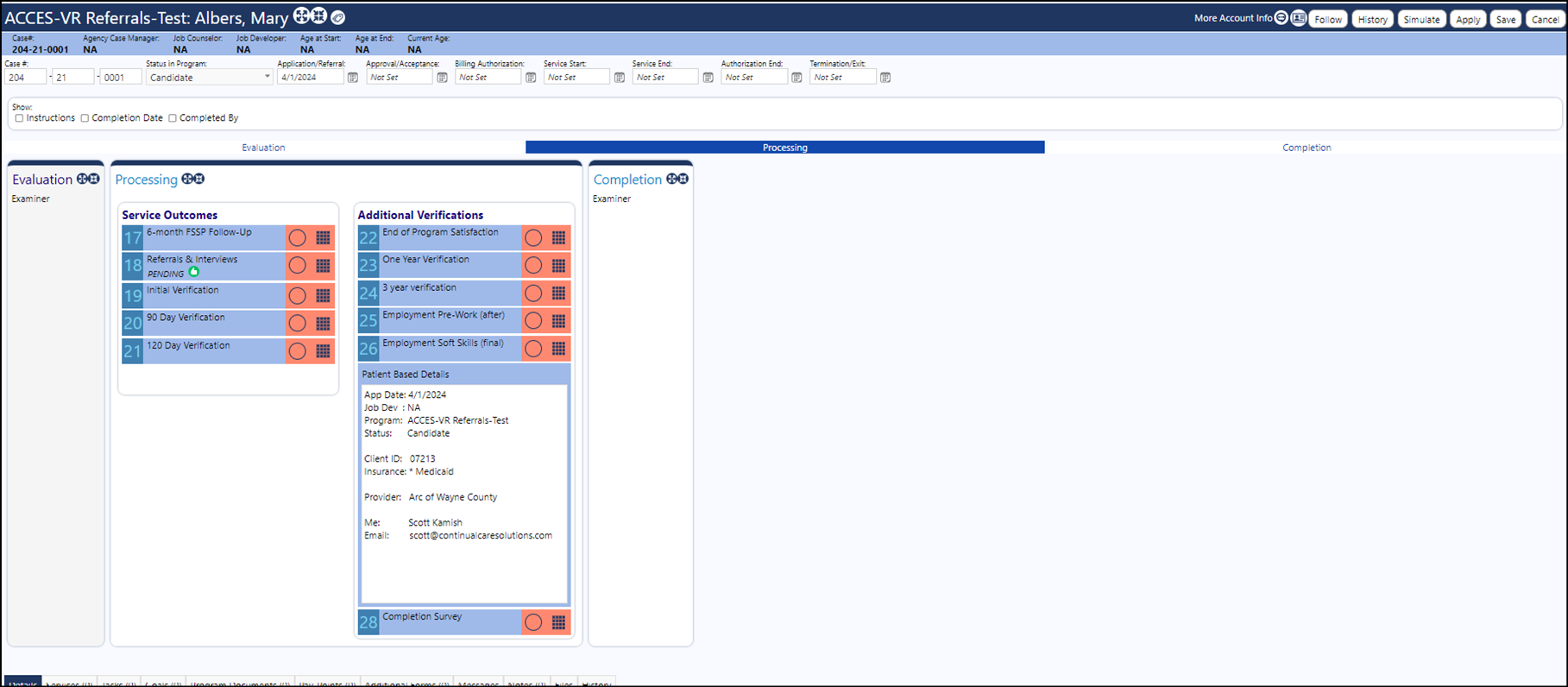Stages can be used to hide workflow steps that are not ready to be addressed.
Think a program in its entirety, from intake, enrollment, evaluation, processing, to completion, etc.
In order to do any one of those, you might have multiple steps like receive application, review, capture the missing information, go through the checklist to make sure everything is there, perform an evaluation based on certain items, capture the missing information, identify weaknesses or barriers, identify strengths, perform a further evaluation, etc. - in IMPOWR, you can think of the steps as the legos or widgets.
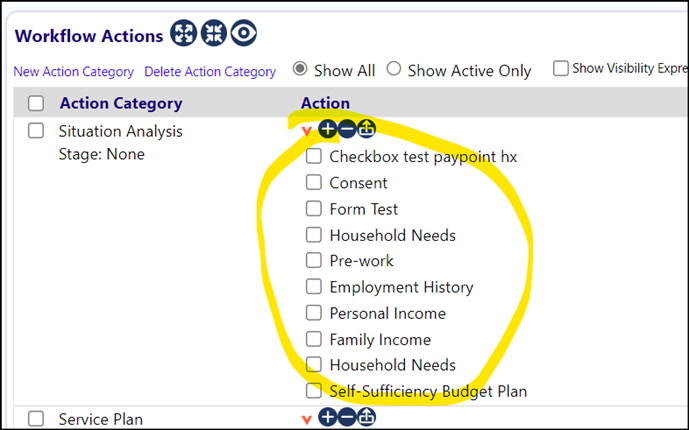
Now, some of those steps can be grouped together… like as part of intake, maybe the receive application, review, capture the missing information, go through the checklist to make sure everything is there, all have to be completed before you can move to the evaluation of the weaknesses and strengths step. The grouping of those items are the categories in the workflow.
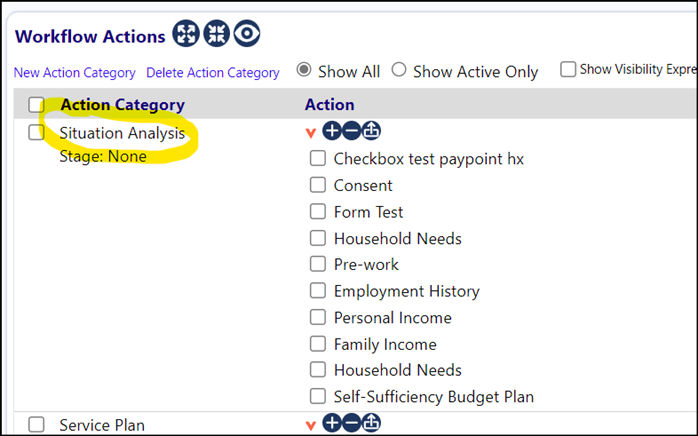
But, when we look at the big picture, we know that the application process, the evaluation process, and the determination process are all things that must be accomplished (or grouped together) in order to get to that final stage for intake… well, that grouping is the Workflow stage (which can also be thought of as a phase of the process).,
We create the workflow stages in the program workflow. We first identify the stage, decide if it will consist of one or more categories, and then identify the primary role of the person ultimately responsible for the stage.
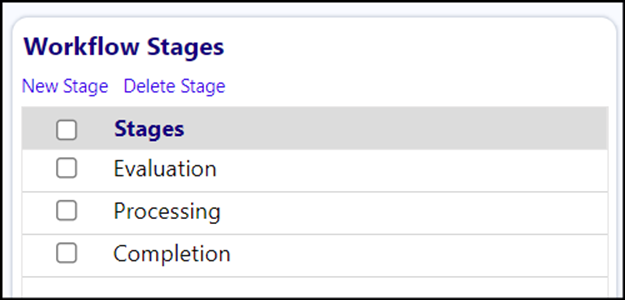
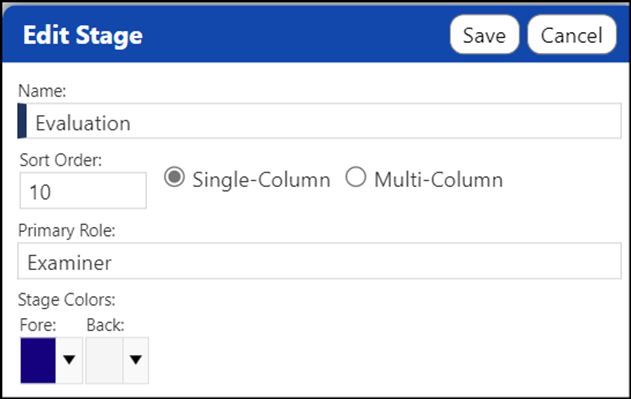
Once we know what the stages are, we can assign the categories to those stages by clicking on the action category and choosing the stage.
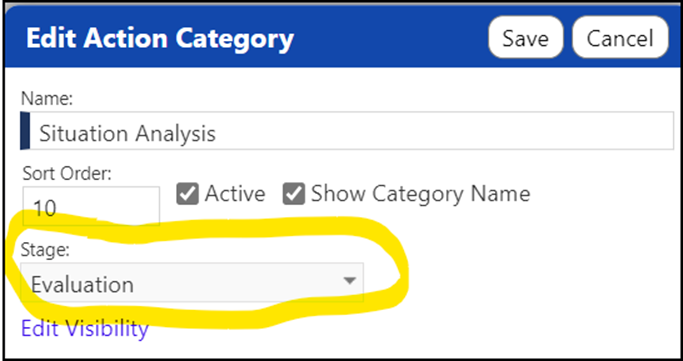
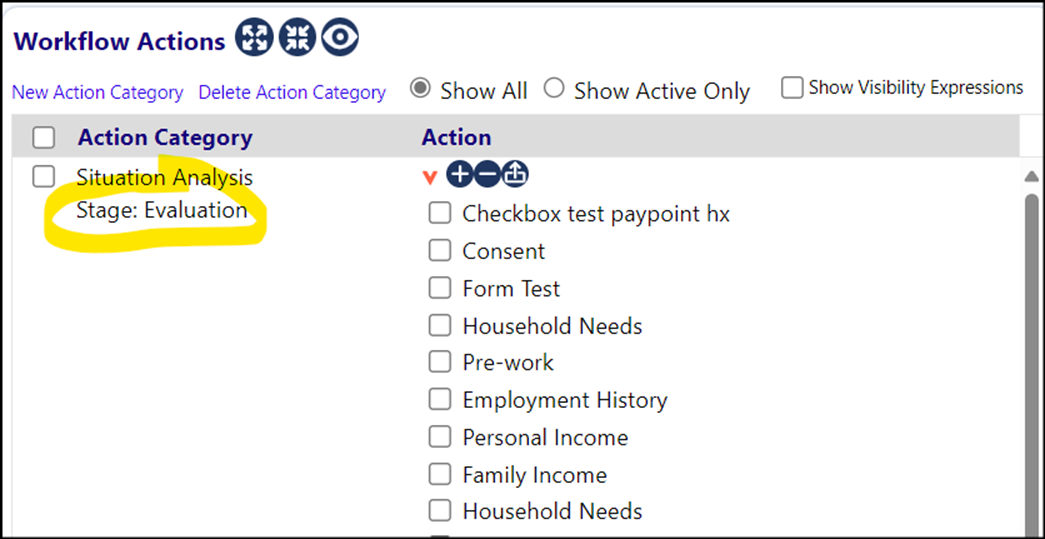
(This is also where you can hide the category based on statuses, etc. – but you may not even need to consider this (it is a little more complicated) if you use stages.)

Once the stages have been saved, this is what you will see when you open up a program workflow. All 3 stages will display on the workflow. Users can click on a stage and the categories and legos in that stage (or phase) are displayed. For the stages which were not selected, their categories and legos are hidden… but you can see who is the primary person responsible for that phase/stage. So, by having these stages, you can choose to only show the categories action steps (legos) that need to be completed for that phase to be completed. And when that stage is done, selecting the next one will only show the legos and categories associated with that phase. It makes the workflow a lot cleaner and less cluttered this way, and while you can hide activities based on account roles by selecting the visibility of each lego or restrict who can complete the lego, the use of stages is another way to manage the display of the workflow on the screen.
